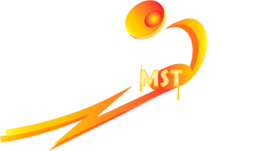In my second post on the blog, I wrote about a user manual on goal setting I had created as part of my coursework when working towards by Sport Psychology degree. If you missed that one, you can find it here.
In that post, I mentioned some tenants of good goals as suggested by experts in the field (Gould and Voight) in which it was suggested that goals should be achievable and realistic while challenging at the same time. In fact, as Voight had suggested, one of the keys to SMART goals is that they be achievable (the “A” in SMART) and within the capabilities of the athlete. But how does one balance “achievable and realistic” with “challenging”?
I think back to my days in the corporate world where our annual review (and raises) were tied to just how well we achieved the goals we had “negotiated” with our supervisor.

There was a lot of hesitancy to sign up for stretch goals that would push us – making us and the company better – when missing such goals could hit us in the back pocket come review time!
I did experience one exception to this dissonance in my professional career – and that was during my time working for the Japanese company Mitsubishi from 1988 until 1997. I learned that in the Japanese corporate world, goals were looked at a little bit differently. In the Japanese system, stretch goals were the norm. It was perfectly ok to set a goal to reach for the stars! But, if the end result was to only make it to the moon, that was ok, since without having the stretch goal of reaching the stars, the end result may have only been to achieve a low earth orbit.

There would be no shame (or punishment) for coming up a little short as long as the effort was made to do one’s best. It is just a different mindset.
So, what got me to thinking about this in May of 2022 after our goals for the new year should already be set?
Well, my good friend and fellow shooter Doug Parsons loaned me a book he had just finished reading.

“Think Like a Warrior – the Five Inner Beliefs That Make You Unstoppable” by Darrin Donnelly highlights goal setting as part of one of the five inner beliefs.

This is one of the few books I have read where I was compelled to read it in one day. Normally, I allow myself a week to read a book. Not this one… once I picked it up, I simple could not put it down.
Donnelly tells the story of a hypothetical coach who is down on his luck, and is visited by five great coaches from the past (much like Scrooge in “A Christmas Story”) to help him revitalize his coaching style during the course of his collegiate football team’s season. Each coach imparts on our hero, one of the five inner beliefs.
The third belief, summarized by Donnelly as follows: “I dream big and I ignore naysayers” got me thinking about how we set goals. In the book, our hero is visited by Herb Brown, the coach of the young American hockey squad that beat the professional Russian team in the Miracle on Ice gold medal match. Think of what might have happened if Coach Brown has encouraged his players to set “achievable goals” such as not getting beat by more that 5 goals! No, he pushed his team to do what all the media said could not be done – beat, what was on paper, a vastly better Russian team.
So, when you are setting your goals, think about how you balance “achievable and realist” with “challenging” and what “within your capabilities” means to you. After all, if you set your goals based on your current capabilities, you probably will not get better as quickly as if you “shoot for the stars”! Plus, if you set a stretch goal for your recreational athletic performance, I promise you no one will try to take any cash away from you if you come up a little short!
Speaking of goals, have you been reviewing yours since writing then earlier this year? Do they need any revision? Would inserting a stretch goal or two serve you well?
If you are interested in Donnelly’s book, here is the Amazon link (by the way, I liked this one so much, I bought my own copy and also picked up the author’s latest work as well):
